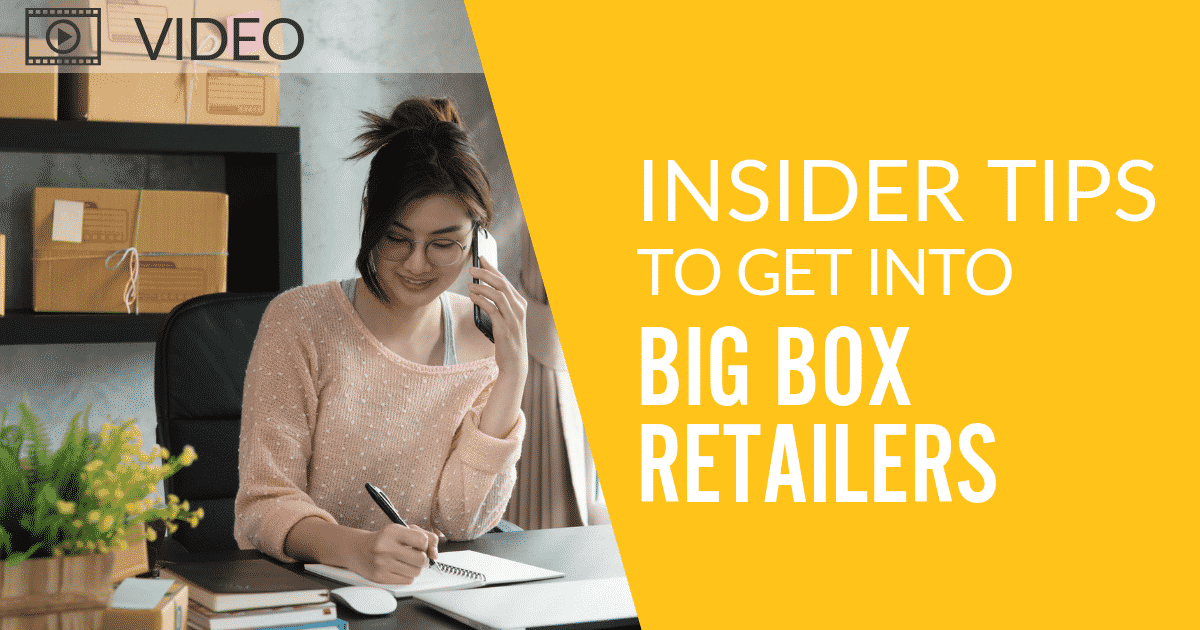Your product is well tested and your market surveys show people love it. You have the coolest packaging known to man. If getting into big box stores is next on your checklist, you are going to love the insider info we have in this article.
Savvy Strategies to Play with the Big Box Store Boys
1. Know Your Numbers
You should know everything possible about your target market, their buying habits, and your manufacturing thresholds before you can even think of reaching out to a big box store.
You must be prepared to answer these questions with confidence and clarity:
- Who are your competitors?
- What is the competitive landscape like?
- What are your price points and margins?
- How flexible can you be on your pricing?
The large retailers require all these answers and more. They will also negotiate the details, as they know their customers and how much they will spend.
“So if you wanted, for instance, your pet product to be in Target, knowing your competitive landscape in that area in Target as well as competitive landscape, and in other large retailers is crucial. Because they will want to know how it is different from what they already have, why should they change what’s on the shelf to put your product in, and what makes it better than what they already have in store?” – Mark Sousa
2. Get Professional Help
You will probably need a sales representative’s help. Most of the large retailers have people who know the landscape, competitive matrix and buyers for your area. They can help you understand where your product might be a good fit inside the big box store and what are the margin requirements for that section.
REMEMBER: Every shelf has to generate a certain amount of money and every product on that shelf is a part of the bigger shelf value. The retail store has a requirement to produce the expected sales or the product won’t be on the shelf anymore.
4. Remember Size and Location Matter
A very large product has to produce more money, so if your product takes two spots on a shelf then it needs to earn twice as much. Also, there is the positioning, as some spaces in big-box stores are more visible and are more expensive, too.
Floor displays, designed to move the product, are a great example of this. Their margin requirement will be 60-70%, unlike other positions where this will be around 40%.
PDQ Displays: These “Pretty Darn Quick” displays are quick-to-assemble floor or table displays that can be strategically placed to get more attention. They are more expensive than your typical store shelf, though.
5. Do the Math Before Committing
Understanding the retailer’s desired quantities and the risks involved is critical to your success. The fact is, many people get so excited when they are offered a deal from a big box store that they don’t TRULY think out the ramifications of the deal.
“For example, Walmart has 4,000 stores… Let’s say they give you half chain (that’s 2,000 stores). If you had five products that were going to fit on the shelf for 2,000 stores, that’s 10,000 products that you have to buy before you even make a dime.” – Mark Sousa
6. Avoid the Need for Buy-Back
Once your product is on the shelves, you have 6 weeks to start selling it. If you don’t sell at least 1 product per store per week, you might have to buy all your products back from them.
This is why marketing your product is very important. Stay fresh in fashion and style, offer coupons, and make the the product attractive. The packaging is your billboard, don’t ever forget that.
How Can Partnering with IdeaPros Make My Entrepreneurial Path Different?
At IdeaPros, we focus on all phases of product development and we are great at doing background work, surveys, understanding customers and demographics, Product Design & Engineering process and all the other steps necessary for the success of your product.
We partner with entrepreneurs at any stage and who are ready to invest in the success of their idea. Once you partner up with us, your vision starts becoming reality at a much faster pace.
Apply for an interview and let’s explore partnering together!

